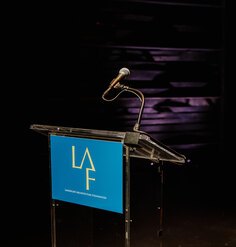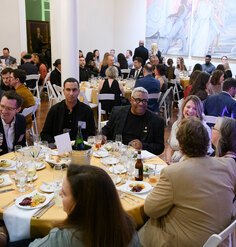From Studying to Shaping: Working with Ecologists to Operationalize "Earth Stewardship"
“Sustainability goals will be met only if we change the way science intersects society.” The Ecological Society of America’s (ESA) Earth Stewardship Initiative is trying to tackle this challenge head-on. This year, the ESA Annual Meeting featured a demonstration project centered around Sacramento’s American River Parkway, a 23-mile, 5,000-acre greenway that provides flood protection, habitat, and recreation opportunities.
Organized by Dr. Alexander Felson of Yale University with support from outgoing ESA President Dr. Jill Baron and Professor Neal Williams of the University of California-Davis, the initiative brought together a large group of stakeholders to explore how ecological theory, research, and applications can be integrated with the knowledge and work of consultants, practitioners, and policymakers to increase ecological function, resilience, and human well-being.
During the conference, a group of 20 Research Fellows attended a jam-packed week of events focused on moving “from studying to shaping” using the design process. Throughout the week, dozens of other conference attendees participated in the activities and engaged in the dialogue. The first few days focused on site analysis and information gathering to better understand the American River Parkway and its context.
To help the ecologists better understand the design process, a panel of landscape architects, including Dr. Fritz Steiner, FASLA, University of Texas at Austin; Mia Lehrer, FASLA, Mia Lehrer + Associates; and Stephen Engblom, AECOM presented on their work and what informs it.
As the core group moved from site analysis to thinking about conceptual design and planning, the Landscape Architecture Foundation (LAF) presented on landscape performance and shared a number of precedents from the projects in our Landscape Performance Series.
The following day, the Research Fellows were joined by the landscape architect panelists, other representatives from their firms, Mark Johnson, FASLA of Civitas, Julia Watson of Studio Rede, and a host of conservation scientists, engineers, and other American River Parkway stakeholders to develop design concepts through a fast-paced charrette process. The ideas addressed a wide range of issues including innovative ways to deal with damming from beavers, improving salmon habitat, providing and studying bee nesting sites, and incorporating green jobs training for the parkway’s sizable homeless population.
The week culminated in the presentation of these concepts to American River Parkway management leaders followed by a strategy discussion of how to continue the collaboration. The Research Fellows and a fall Yale graduate course will continue to refine the design concepts to develop actionable projects.
LAF was proud to participate in this ground-breaking initiative and looks forward to continuing the dialogue about use-inspired application of ecological science, and how the expertise of ecologists can better inform the work of landscape architects in designing for and evaluating landscape performance.











